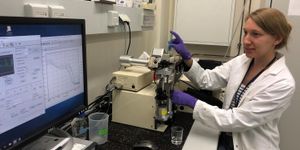Can CRISPR Technology Treat Alzheimer's?
New drugs that seek to treat Alzheimer’s disease (AD) have a 99.6% failure rate. This makes it the only disease in the top 10 causes of death that cannot be prevented, slowed or cured. To this end, there is a lot of hope in new technology to finally overcome these hurdles. CRISPR technology in particular, with its ability to edit genes, is particularly promising.
Yet, despite all the hype around CRISPR technology, the Food and Drug Administration (FDA) has only approved one CRISPR-related treatment so far, and not for AD. Instead, it seeks to treat various types of cancer, having entered clinical trials in May with the hope of measuring results from 18 patients (Fan: 2019). But why aren’t there any clinical trials to treat AD?
Creating a CRISPR technique to treat conditions of the central nervous system in people by itself poses many challenges. In particular, neuroscientists have struggled to find a safe and effective way to deliver CRISPR technology to targeted cells due to difficulties in designing a treatment that can safely cross the blood-brain barrier, traverse organelles and eventually end up in the targeted cell nuclei work (Fernandez: 2019). Only adding to this is the limited knowledge researchers have on the brain itself in comparison to other regions of the body, making researchers even more cautious of the technique (Rudin: 2018).
Despite these difficulties however, CRISPR technology has nevertheless had some breakthroughs in possible treatments for AD. For example, a team of Korean researchers have created nanoparticles that act as delivery drones for transporting CRISPR to brain cells in people with Alzheimer’s. Their treatment works by turning off the Bace1 gene, known to stimulate amyloid beta production, which has been linked to Alzheimer’s cognitive effects (Park: 2019).
So far, it seems to work well. After a single dose of the treatment, mice with characteristics of AD experienced significant reductions in their beta-amyloid levels, alongside signs of improved memory and learning. Although promising, the researchers feel that before human trials could begin, they need to confirm their results on higher primates too (ibid.).
Meanwhile, CRISPR technology is also being used to advance our understanding in other areas of AD treatment. Researchers at the Institute of Molecular Pathology Biomarkers (IBPM) for example used CRISPR technology to identify a biomarker for the disease. Finding a deficiency in the protein STIM1 in the brain tissue of those with AD, they used CRISPR to silence the gene that allows STIM1 to be expressed to see whether a lack of the protein could be linked to Alzheimer’s. When inactivated, the researchers noticed the development of AD-like patterns, confirming a link between STIM1 and the disease, thus creating new avenues for research and eventual drug development (University of Extremadura: 2018).
To conclude, although CRISPR shows promising signs for one day treating AD, further research on both how the disease functions, as well as how CRISPR may be delivered is required before treatments can properly be developed. In the meantime however, it is clear that the technique may still be used to develop our understanding of the disease and explore possibilities with other treatments too.
Sources
Fan, Shelly: Singularity Hub
Fernandez, Tara: Massive Science
Rudin, Mark: Idaho Statesman
University of Extremadura: Eureka Alert!
Park, Hanseul: Nature










